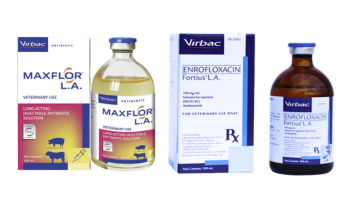
Advantages of using Long-Acting (LA) Injectables in Swine Farming
2023/09/19
The Philippines's pig farms are increasingly practicing good animal husbandry practices, increasing the acceptance of their products on national and international markets. The Good Production Practices Handbook for Pig Farms mentions the need to minimize the use of veterinary drugs that can cause injection site injuries or tissue damage. Similarly, use injections only in authorized terrain locations. Similar precautions should be taken when using parenteral vaccines.
One of the most common problems in slaughterhouses and slaughter sites in the Philippines is the presence of broken needles and debris. These are often undetected and pose a significant risk to meat consumers. In the case of pork (Sebranek et al., Iowa State University), the economic significance of the presence of needles in the carcass is the refusal of delivery by the buyer and the possible penalties imposed on the producer.
The most commonly used route of administration for injectable drugs in pig farming is the parenteral route, primarily intramuscular (IM), subcutaneous (SC), and, slightly less frequently, intravenous (IV).
The use of IM drugs is common, the local sites are mainly the legs and neck, the neck area is the most commonly used, especially for convenience, since the neck does not have as much economic value as the legs . Rejection occurs if spots or abscesses are present.
To achieve good results using injectable products, it is very important to consider various precautions when using IM, SC, or IV routes of administration, including:
- Wash your hands thoroughly
- Disinfect the area where the medicine or vaccine will be applied with a disinfectant (clean the bottle cap).
- Use the appropriate size needle (see Table 1).
- Use disposable needles if possible to avoid infection with disease
- Calculate the dose per animal according to body weight
- Application amount (maximum 10ml per application area is recommended)
- Do not inject into wet or dirty areas of the animal.
- One needle is used to pour the medication into the multi-dose bottle and the other needle is used to inject the animal.
- Inject at the appropriate time and without pressure.
- Consider withdrawal times for each medication.
The frequency of application of injectable medications is also very important, since frequent applications to the same site can cause fibrosis, irritation may also occur due to the type of drug or vaccine vehicle and stress in the animal due to pain and stress.
Benefits of Using Long Acting (LA) Injectable Medications are:
- Immediate medication
- Reduce the number of applications per animal
- Less pig stress
- Efficiency in the use of labor (includes time)
- Implementation of preventive programs
- Less use of material resources (needles, syringes, etc)
- Reduction of injuries and abscesses due to faulty applications
- Reduces the spread of diseases through contaminated needles
Therefore, it is very important to consider the injection technique, the frequency of application and the type of medication or vaccines to be administered.
For intramuscular (IM) injections, insert the needle into the upper neck just behind the ear, making sure the needle is at a 90° angle to the skin. For subcutaneous (SC) injections, the needle is lifted and withdrawn from the animal's skin and immediately passes through the skin to inject the drug.
Similar precautions should be taken when administering vaccines via IM or SC, as with drug therapy, to avoid the risk of inadequate dosing, poor hygiene, inappropriate needles, or any of the many other possible handling errors. Tissue damage must be avoided.
As with medications, the same care must be observed for the application of vaccines via IM or SC and avoid damage to the tissue due to poor application, lack of hygiene, inadequate needles or many other handlings errors that may arise.
Main Advantages of Long - Acting (LA) Injectable Antibiotic Treatments in Animals:
- Rapid response (effectiveness on outbreak)
- Excellent bioavailability (depends on the protein binding of each antibiotic)
- Results independent of external factors (they are not affected by food consumption, health status of the animal, water pH or quality, etc)
- Rational use of antibiotics (Exact dose: mg/kg of live weight, reduces the possibility of bacterial resistance), Xavier de Paz, 2013 WattageNet.com
- Less spread of diseases due to the use of contaminated needles
- Less stress
Desirable characteristics for a Long-Acting (LA) Injectable Antibiotic
- High efficiency
- High tolerance
- Good diffusion in fabrics
- Injectability (syringability) or fluidity
- Minimal pain upon application
- Noble with the fabric
- Minimal reaction at the application site
- True long-acting activity
Conclusion
For all this, we use long-acting injectables (LA) that do not cause irritation or pain at the application site or with a minimum and help improve the animal's health status and reduce stress with less effort. You will always need to use it. It is economical and reduces losses. It occurs rarely in the ham area, for example in the loin head, due to an abscess or an incision through the fibrous tissue of some parts of the carcass. From a public health perspective, it is important to reduce the risk of the presence of broken needles and their fragments. These needles pose a risk to end consumers, and penalties from slaughterhouses can also limit pork exports. and the purchaser.
Related Products
Maxflor LA Injection 100ml: https://ph.virbac.com/products/anesthetic/maxflor-la
Fortius LA Injection 100ml: https://ph.virbac.com/products/antibiotics/fortius-la

Bibliography
Allen Harper. 2000. Injection Use and Quality Assured Pork. Virginia Cooperative Extension, Virginia Tech. Virginia State University. http://www.sites.ext.vt.edu/newsletter-archive/livestock/aps-00_05/aps-0222.html
Doug King, Tom Painter, Derald Holtkamp, Paul DuBois, Chong Wang. 2010. Effect of injection tool on incidence of head and neck abscesses at slaughter. Journal of Swine Health and Production, 2010; 18(6):290-293
